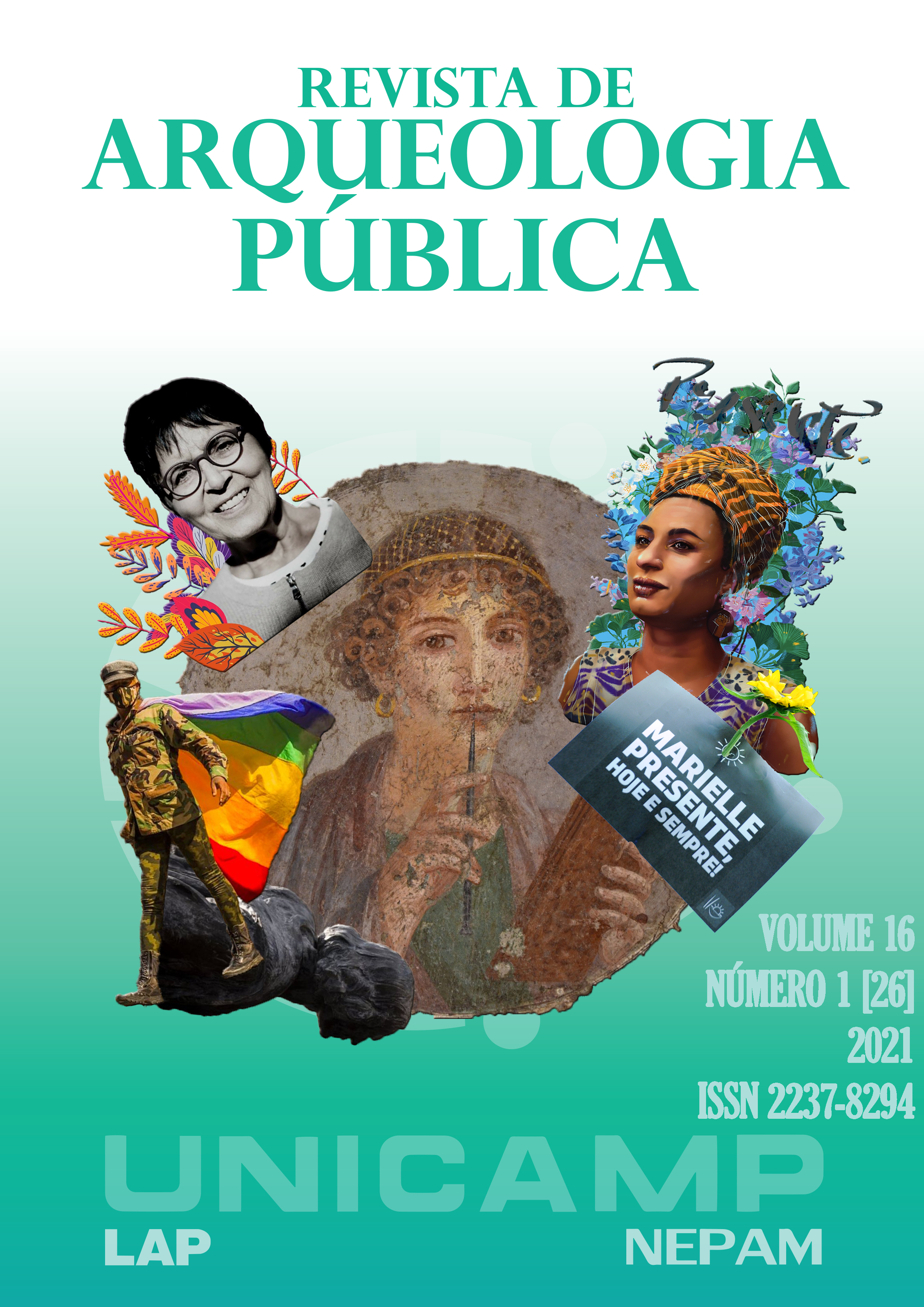Abstract
This article has the objective of discussing Gender Studies and its cultural construction in Brazil, alongside Heritage Studies. We have chosen to bring to the fore the women artisans of Jequitinhonha Valley because this case study brings essential elements about the construction of female and male local identities in a fluid point of view connected with social, cultural, historical heritage, space and craft issues. The ceramist women of the region let us notice the elastic element in identities that are not marked at all. The exchange of social and gender roles is constant, regardless of the much crystalized "community pater familias” that consolidates sex as a determinant of well-marked and sectorized functions. In the case of artisan ceramist women of Jequitinhonha region, there are breakings of paradigms, boundaries, asymmetrical barriers, function, craft, and gender construction, oscillating between the paternalist traditionalism of fixed functions and the fluid and dynamic social system of the daily economic demands.
References
ALMEIDA, Miguel Vale. Senhores de si: uma interpretação antropológica da masculinidade. Lisboa: Fim de Século, 1995.
BARBOSA, Vera Lucia, and Maria Inácia D'Ávila. Mulheres e artesanato: Um ‘ofício feminino’no povoado do Bichinho/Prados-MG. Revista Ártemis 17.1, 2014.
BARBOSA, Ana Mae. Arte-educação no Brasil: realidade hoje e expectativas futuras. Estudos Avançados, v. 3, n. 7, São Paulo, set-dez 1989.
BAUMAN, Z. O Mal-Estar da Pós-Modernidade. Rio de Janeiro: Ed. Zahar, 1998.
BOURDIEU, Pierre. O poder simbólico. Lisboa: Difel, 1989.
BOURDIEU, Pierre. Razões práticas: sobre a teoria da ação. Papirus Editora, 1996.
BOURDIEU, Pierre. La domination masculine. Actes de la Recherche, n. 84, setembro de 1990, p. 8-9.
BUTLER, Judith. Problemas de gênero. Feminismo e subversão da identidade. Trad. Renato Aguiar. Rio de Janeiro: Civilização brasileira, 2003.
CANCLINI, Nestor Garcia. Culturas híbridas: como entrar e sair da modernidade. São Paulo: Edusp (1997).
CAULFIELD, Sueann. The History of gender in the historiography of Latin America. Hispanic American Historical Review 81.3-4 (2001): 449-490.
DA SILVA, Glaydson José. Gênero em questão-apontamentos para uma discussão teórica. Mneme-Revista de Humanidades 5.10, 2001.
DE ARRUDA CAMPOS, Alzira Lobo, et. al. Mulheres criminosas na abordagem interdisciplinar. Pesquisa em Debate, edição 9, v. 5, n. 2, Jul/dez 2008.
DALGLISH, Geralda. Tradição e Identidade Cultural na Cerâmica Popular do Vale do Jequitinhonha. XXIII Encontro da ANPAP – Ecossistemas Artísticos. Belo Horizonte, set. 2014, p.13.
DURKHEIM, Émilie. As regras do método sociológico. São Paulo: Editora Nacional, 1985.
FLORESTAN, Fernandes. A integração do negro na sociedade de classes: ensaio de interpretação sociológica. Vol. 1. São Paulo: Editora Globo, 2008.
FREYRE, Gilberto. Casa-grande & senzala. 48ª edição. São Paulo: Global, 2003.
FOUCAULT, M. História da sexualidade: a vontade de saber. Rio de Janeiro: Editora Graal, 1997.
FOUCAULT, Michel et al. Microfísica do poder, v. 14, p. 1-14, 1979.
HALL, Stuart. A identidade cultural na pós-modernidade. 7a ed. Rio de Janeiro: DP&A, 2002
HIRATA, Helena. Flexibilidade, trabalho e gênero. Organização, trabalho e gênero. São Paulo: SENAC (2007): 89-108.
LAMAS, Berenice Sica Psicologia: Ciência e Profissão, Mulher artista: cidadã do universo? Psicol. cienc. prof. vol.15 no.1-3 Brasília-1995.
LEVIN, Gail. Lee Krasner: Uma Biografia. Nova Iorque: Harper Collins, 2011.
LE GOFF, Jacques. História e memória. Trad. Bernardo Leitão, 7ª. Edição. Campinas: Editora da Unicamp, 2013.
LIPOVESTSKY, Gilles. A terceira mulher : permanência e revolução do feminino. Tradução de Maria Lúcia Machado. São Paulo: Cia das Letras, 2000.
MATTOS, Sônia Missagia. Artefatos de gênero na arte do barro. Editora da Universidade Federal do Espŕitu Santo, 2001.
OSTOS, Natascha Stefania Carvalho De. A questão feminina: a importância estratégica das mulheres para a regulação da populaçãoo brasileira (1930-1945). Cadernos Pagu 39, 2012, p. 313-343.
QUIRINO, Tarcízio Rêgo; et al. Mapeamento do Artesanato Mineiro. Fundação João Pinheiro. Belo Horizonte: 1979, p. 45.
SEGALL, Lasar. Enciclopedia Itaú Cultural de Arte e Cultura Brasileiras. San Pablo: Itaú Cultural, 2020.
SOCOLOW, Susan Migden. The women of colonial Latin America. Cambridge University Press, 2015.
STRATHERN, Marilyn. “Some Implications of Hagen Gender Imagery”. In: ORTNER,
Sherry B., e WHITEHEAD, Harriet (Orgs.). Sexual Meanings. The Cultural Construction of Gender and Sexuality. New York: Cambridge University Press, 1992.
WALBY, Sylvia. Theorizing patriarchy. Basil Blackwell, 1990.

This work is licensed under a Creative Commons Attribution-NonCommercial 4.0 International License.
Copyright (c) 2021 Revista Arqueologia Pública


